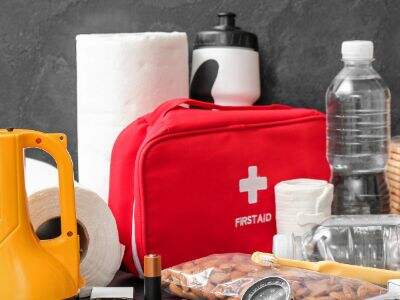Hello, friends. Today, we are going to talk about how to do chest sealings for injuries. Chest seals work much like a specific type of band-aid used to seal the wound, but instead of being a flexible substance normally on the body, the seal has adhesive and plastic to hold the air in. That hole could be very serious because if air enters the chest, it can make it hardest for someone to breathe. We need to be ready to respond quickly for someone with a hole in their chest. That’s why chest seals are so crucial in emergencies. They can aid in keeping a person safe or can save a life.
How to Use a Chest Seal in an Emergency
Speaking of through and throughs, the first step to using a chest seal is finding the hole in the chest. This hole could come from a gunshot, a knife, or some other type of injury. At other times, these injuries can occur in the course of an accident or fights. Once you locate the hole, it is time to clean the area around it. You can use an antiseptic solution. This is key, because it prevents germs and dirt from getting in, and preventing infection.
Once you’ve cleaned the area, you can place the chest seal over the wound. The Chest Seal will have a sticky portion that adheres to the skin, so ensure it is pressed firmly so it adheres to the patient. You really want to make sure that whole has a seal around it. You can also apply a piece of gauze over it after placing the chest seal. Gauze is a thin cloth that you can use to further protect the area. You can use tape to make sure that the gauze and the chest seal stay in place so that they aren’t moving around.
Advanced lessons from NY's first responders
Knowing how to use a chest seal is highly critical, however. If it improperly fitted, air can enter the chest, and this could lead to very serious issues for the injured patient. They may struggle to breathe, which is a threat. For this reason, it's vital to learn the proper use of chest seals. You, too, should practice with the chest seal before you ever need to assist someone in a real-life emergency. Doing it a few times will make you feel confident and ready to go.
Practice Makes Perfect
Increasing your proficiency with a chest seal can be done on a dummy/training tool. These kinds of tools are there to teach you and practice it safely with a chest seal. The more you practice, the more comfortable you will be with the process and the better at it you will become. It’s a nice introduction to what to do. Practicing with a partner is also a good idea. If you have any questions or need assistance, having someone else around can be beneficial. Keep in mind that the objective is to preserve a life. So, learn and practice how to use these chest sea properly.
Tips for Helpers
A chest seal is then placed over the wound, sealing the opening very important if you are helper at an emergency. If you happen upon an accident or injury, take a moment upon arrival to scan the scene and determine who, if anyone, needs your help first. Sometimes you encounter a lot of hurt people and need to determine who needs your help the most. Your well-trained brain will know to make wise decisions and act fast when the environment is hectic. Stay calm, even though it can be stressful. This means you have time to do it all properly.
Medresq is here to help you learn this life saving skill. Using a chest seal bandage in emergencies is a very important skill to learn, and one that could save someone's life. Knowing how to administer it in a timely manner and without error could help a great deal in determining whether someone stays safe or worsens, Dr. Rosenberg said. Learning and practicing the correct technique is crucial so you will be ready in case of emergencies.
Hope this guide can help young reading learners involving this skill. Thank you for reading; if you have any questions or would like to learn more, contact us here at Medresq. We are here to help you.
 EN
EN
 FR
FR
 DE
DE
 IT
IT
 JA
JA
 KO
KO
 RU
RU
 ES
ES
 AR
AR
 BG
BG
 HR
HR
 DA
DA
 NL
NL
 FI
FI
 EL
EL
 NO
NO
 PL
PL
 PT
PT
 RO
RO
 SV
SV
 TL
TL
 ID
ID
 SR
SR
 UK
UK
 VI
VI
 SQ
SQ
 TH
TH
 TR
TR
 AF
AF
 MS
MS
 CY
CY
 IS
IS
 HY
HY
 AZ
AZ
 KA
KA
 MN
MN
 MY
MY
 KK
KK
 UZ
UZ
 CS
CS



